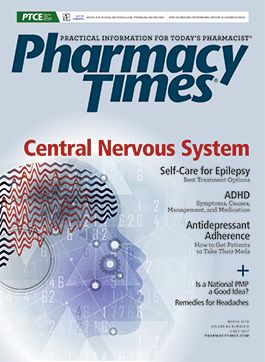Publication
Article
Pharmacy Times
A New State of Mind: How Brown Bagging Can Bring Clarity
Author(s):
Brown bag consults can be essential educational and safety tools to measure and ensure quality care.
Editor’s note: Case is not based on an actual patient.
Brown bag consults can be essential educational and safety tools to measure and ensure quality care. By asking patients to bring in all of their current medications, including OTC, mail order, specialty, and herbal products, pharmacists can guarantee appropriate and up-to-date care.
Pharmacists are key providers in the continuum of care, consistently helping to identify potential concerns and problems that may require follow-up with prescribers or a medication therapy management (MTM) session. It is essential that a pharmacist’s workflow allow for brown bag consults, which can do the following:
- Develop the patient—pharmacist relationship to foster better individualized service, forge patient loyalty and trust, and prevent medical errors.
- Provide insight into a patient’s lifestyle and quality of care.
- Show how well patients understand their conditions and medications.
THE CASE
MM is a 78-year-old regular customer at the pharmacy. Even though he is a veteran and gets most of the medications for his chronic conditions filled at the pharmacy inside the local Veterans Affairs (VA) hospital, he still relies on your pharmacy for a sense of community and support. MM received a diagnosis of Parkinson’s disease and depression about 10 months ago and has faced many ups and downs. He presents a list of medications and laboratory data from a recent doctor’s visit. MM explains that he was recently at the VA hospital for some appointments and that he left confused and frustrated. He complains, “No one listens to me. I have all of these papers, and I have no idea what I am supposed to do. Instead, I just get more and more medications.”
MM appears tired and anxious. You page through the papers and notice the medication reconciliation performed by another pharmacist. You review it against MM’s profile at your pharmacy and notice some changes. As you conduct your review, he looks concerned. You explain the concept of pharmacy brown bag and MTM sessions and ask whether MM would be interested. He is relieved and says that he will bring in all of his medications the following day. MM says he is looking forward to going over his history and current medication list. He appreciates your listening and your willingness to help him get back on the right track. You suggest that MM come in around 2 pm, which is a slower time at the pharmacy. This will allow you to provide him with personal attention.
To prepare for the session, you pull up MM’s pharmacy profile, after reviewing his VA hospital forms, to compare it with what is in his brown bag:
- Atenolol, 25 mg, once daily
- Duloxetine, 60 mg, once daily
- OTC multivitamin, once daily
- Niacin, 500 mg, once daily at bedtime
- Rosuvastatin, 20 mg, once daily
The next day, MM is waiting in your consultation area. You have done your homework and reviewed his profile. Because you do not have access to the VA hospital laboratory data, you can compare only what is in MM’s brown bag with your information and the forms that he gave you. Here is what is in his brown bag:
- Atorvastatin, 40 mg, once daily
- Carbidopa/levodopa, 25 to 100 mg, 3 times daily
- Citalopram, 40 mg, once daily
- Duloxetine, 60 mg, once daily
- Lorazepam, 1 to 2 mg, as needed
- Dietary supplement niacin
- Ondansetron, 4 mg, as needed
- Rosuvastatin, 20 mg, once daily
- Sertraline, 50 mg, twice daily
MM is willing to have you act as a community liaison between him and his providers. The first step is to follow up with his providers and make them aware of your brown bag session discoveries and the suggestions that you have regarding MM’s plan of care. Time is the biggest challenge, and you will need to find a way to incorporate these clinical opportunities into your workflow. But loyalty and patient satisfaction are priceless and worth the energy to help MM.
What are some general questions and suggestions you have after reviewing his brown bag medications? What laboratory data might have helped you when you reviewed MM’s medications? He needs more counseling and follow-up care. Considering time restrictions, how can you help MM stay on track?
Jill Drury, PharmD, works as a clinical pharmacy specialist in Chicago, Illinois, and Milwaukee, Wisconsin. She earned her doctor of pharmacy degree from Midwestern University College of Pharmacy.







